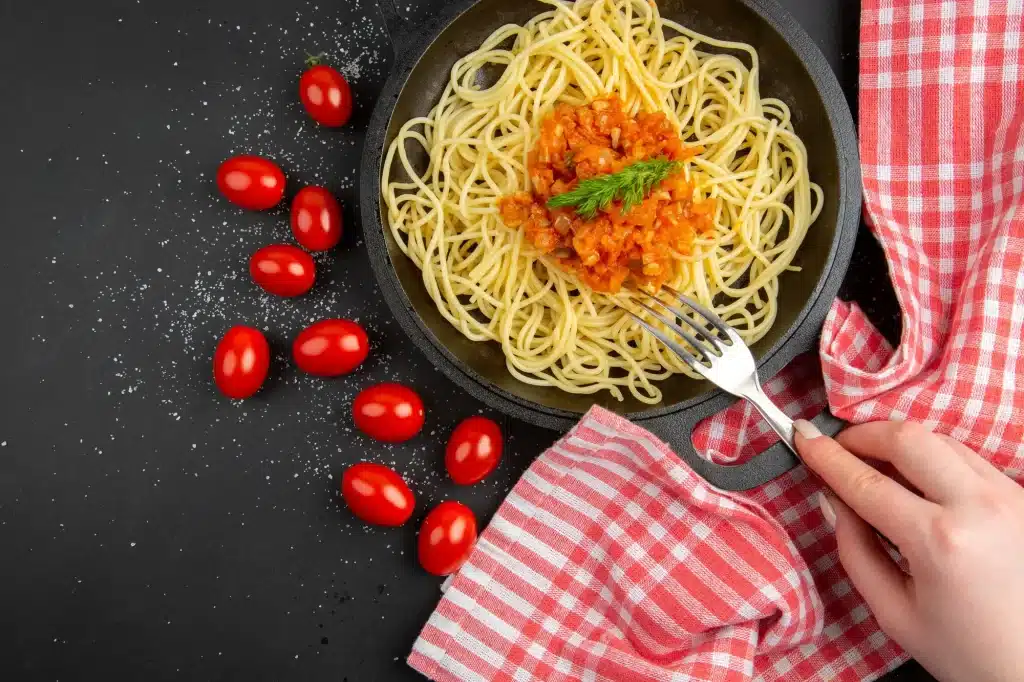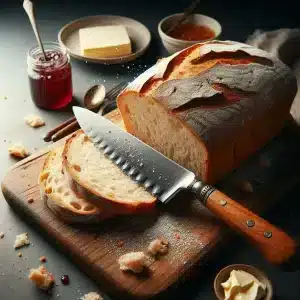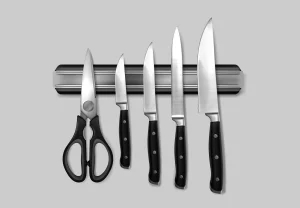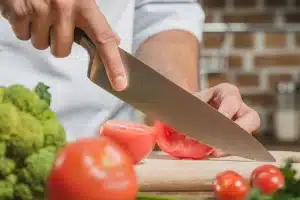One frequently asked question when facing a plate of spaghetti is whether or not to cut it with a knife. While some might think this is a matter of personal preference or convenience, the truth is that cutting spaghetti with a knife is a common mistake that contradicts Italian culinary traditions. Pasta, especially spaghetti, is designed to be enjoyed in long strands that capture the flavor of the sauces and provide a consistent texture with each bite.
In Italian tradition, spaghetti is never cut with a knife. This custom is not just cultural but enhances the sensory experience. Cutting pasta alters its texture and the balance that Italians have perfected over centuries. In fact, using the wrong technique could be seen as a lack of respect for the art of preparing and serving pasta.
Italian Tradition: Eating Spaghetti the Right Way
Italian cuisine has clear rules when it comes to how pasta should be eaten, and Italians take this seriously. In Italy, spaghetti is more than just a simple dish; it’s a symbol of family tradition, a connection to history, and culinary perfection. Eating it properly not only shows respect for this tradition but also allows you to fully enjoy the flavors and textures this dish has to offer.
The correct way to eat spaghetti is to twirl it around a fork. Sometimes, a spoon is used to help make the twirling cleaner and avoid pasta hanging off the fork, but many Italian purists don’t use the spoon and prefer to master the art of using just the fork.
This is where respect for tradition comes into play. When you don’t cut your spaghetti and follow the ritual of twirling it on your fork, you’re replicating an act that has been repeated for generations. For Italians, it’s more than just etiquette; it’s a way to honor the culture.
The Art of Using a Fork and Spoon When Eating Pasta
Mastering the technique of twirling spaghetti on a fork may seem tricky at first, but with a little practice, it becomes a natural gesture. The key is to work calmly, without rushing, and let the pasta do most of the work.
For those who prefer using a spoon, the process is simple: place the fork with a small portion of spaghetti on the spoon and twist the fork until the pasta is firmly wrapped. Then, with the perfectly formed bite, simply bring it to your mouth.
It’s important to take small portions of spaghetti to avoid a tangled mess. Additionally, twirling the pasta in this way ensures the sauce sticks well to the spaghetti, enhancing the flavor in every bite.
Etiquette and Manners When Eating Spaghetti
Eating spaghetti can have its nuances, but etiquette and manners are universal in Italian culture. Etiquette dictates that spaghetti should be eaten elegantly, avoiding any kind of mess at the table. Spaghetti should not be slurped or cut with a knife, as we’ve already mentioned. Slurping can be seen as noisy and unrefined in many formal settings.
It’s common in some countries to teach children to cut spaghetti for easier eating, but when we talk about formal dining or cultural context, it’s better to teach the technique of the fork and spoon from a young age to respect Italian customs. Even outside Italy, in many fine dining restaurants, diners are expected to handle spaghetti without needing a knife.
Maintaining proper posture and avoiding any loud or hurried movements are part of these manners. It’s important to enjoy the food but without clashing with the atmosphere surrounding it.
Why Cutting Spaghetti Breaks Culinary Tradition?
One of the main reasons cutting spaghetti with a knife is discouraged is its impact on Italian culinary tradition. Italian cuisine is deeply rooted in history and culture, and each dish is crafted with care to ensure the best possible experience. Spaghetti, like many other long pastas, is meant to be enjoyed in its full length, allowing the eater to appreciate the texture, the way it twirls, and how the sauce adheres to it. By cutting it, not only is the texture disrupted, but the entire eating experience changes.
From a young age, Italians learn that eating pasta is a ritual. By twirling the spaghetti instead of cutting it, you participate in a custom that celebrates the harmony between the pasta and the sauce. Cutting, in this sense, could be seen as cutting ties with this centuries-old tradition. Moreover, in Italy, where meals are a form of social bonding, taking the time to properly eat spaghetti can reflect a deeper appreciation for the food, culture, and people.
Cultural Significance of Not Cutting Spaghetti
Not cutting spaghetti also has cultural connotations beyond the dining table. In Italy, how you eat can signal your understanding and respect for local customs. Cutting spaghetti is seen as a shortcut or a sign of impatience, and this can be frowned upon in social situations, especially in more formal settings.
This behavior goes beyond personal preference and taps into a broader respect for food and tradition. Italians believe that food should be enjoyed without rushing, with each bite being deliberate and respectful of the effort put into preparing the dish. When traveling in Italy or dining in an authentic Italian restaurant, following these practices helps you immerse yourself in the culture and enhances your overall dining experience.
Cutting vs. Twirling: How It Affects the Flavor and Texture of Spaghetti?
Cutting spaghetti is not only a matter of etiquette but also significantly changes the dining experience. The length of the pasta is designed to provide a unique texture and to maximize the adherence of the sauce to the surface of the spaghetti. When you cut it, that experience is fragmented, and part of the dish’s essence is lost.
The sauce and the pasta are meant to complement each other; when you cut the spaghetti, you reduce the amount of sauce that can wrap around the pasta, changing the balance of flavors. Additionally, the texture of long spaghetti, being more uniform, offers a smoother and more balanced bite.
Common Mistakes When Eating Spaghetti and How to Avoid Them
One of the most common mistakes is cutting the spaghetti for convenience. This, while seemingly easier, destroys the structure of the dish. Another mistake is trying to take too much pasta in one bite, which can result in a mess.
Excessive slurping is also a mistake to avoid. While in some cultures it’s acceptable to make noise when eating certain foods, in Italy, when it comes to spaghetti, this is considered bad manners. The key is to maintain a slow and elegant pace, taking moderate portions and avoiding any behavior that may seem rushed or messy.
Practical Tips for Enjoying Spaghetti Without Cutting It
For those not used to eating spaghetti without cutting it, there are some practical tips to make the experience easier. The first is to practice the fork and spoon technique at home, where there’s no pressure. Over time, this will become a natural movement.
Another useful tip is not to feel rushed. Eating spaghetti the traditional way may take some practice, but the most important thing is to enjoy the meal and the moment. Take your time to twirl the spaghetti correctly and savor each bite.
If you’re in a formal setting or at a special dinner, following these tips will not only enhance your experience but also allow you to enjoy a meal in a way that respects the tradition and culture of those who prepared it.





